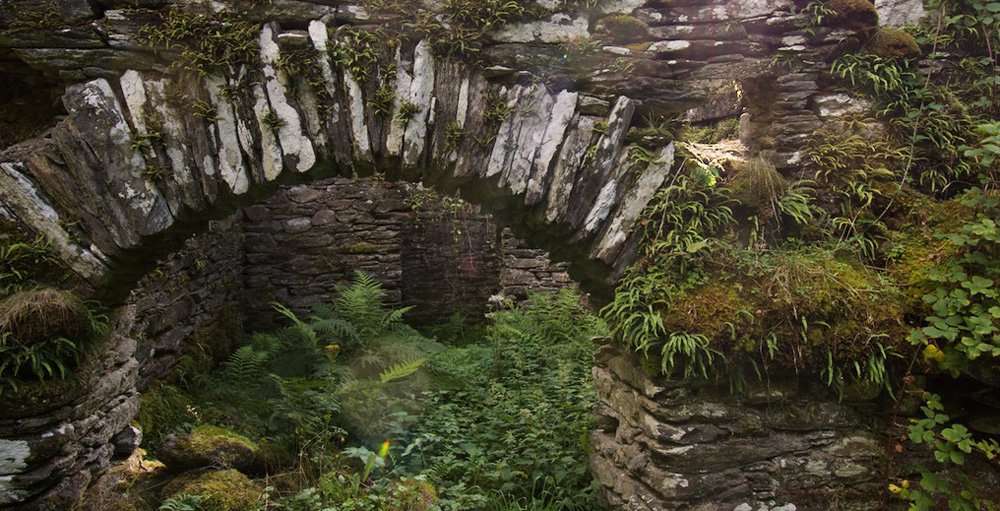
The dark mill of Coilebar
“Tri sgoid Chnapdail:
Carridh Lochd Chrinan,
Frith ghlinn a’Bhacain,
Is muileann dubh Choillebar.”
The three boasts of Knapdale:
the fish cruives* of Loch Crinan,
the deer forest of Bacan’s glen,
and the dark mill of Coilebar.
Traditional verse, unknown date
Source: Canmore
Just a short distance further on from Kilmory Oib, submerged in the deep shade of tall trees, is Kilmory Mill. This old place has a long history – and it played an important role in the daily lives of the communities that once lived in this part of Knapdale.
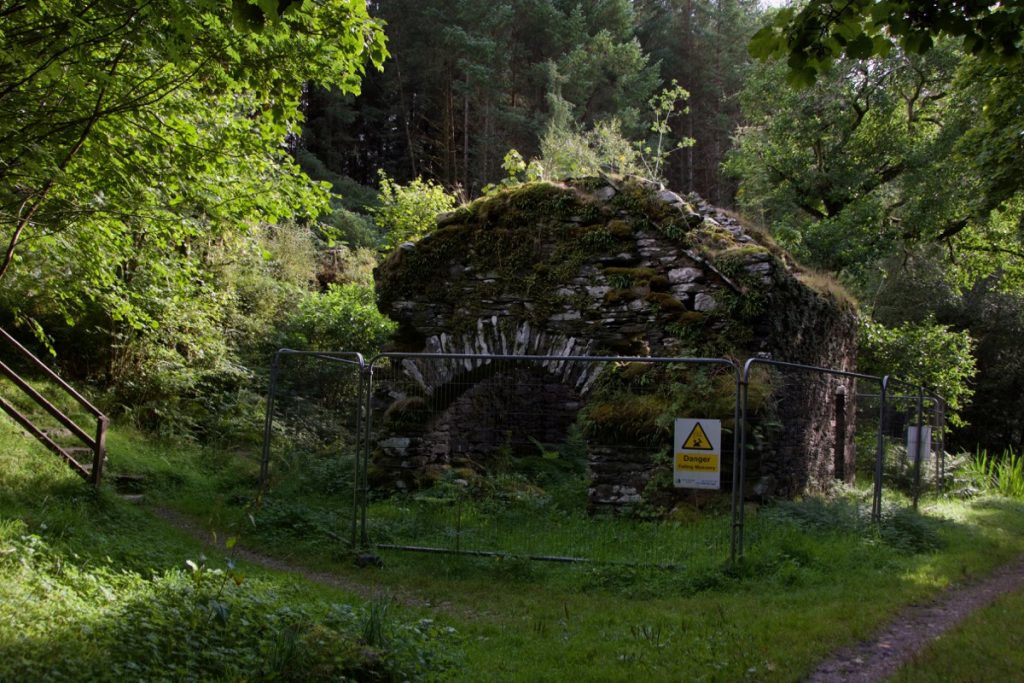
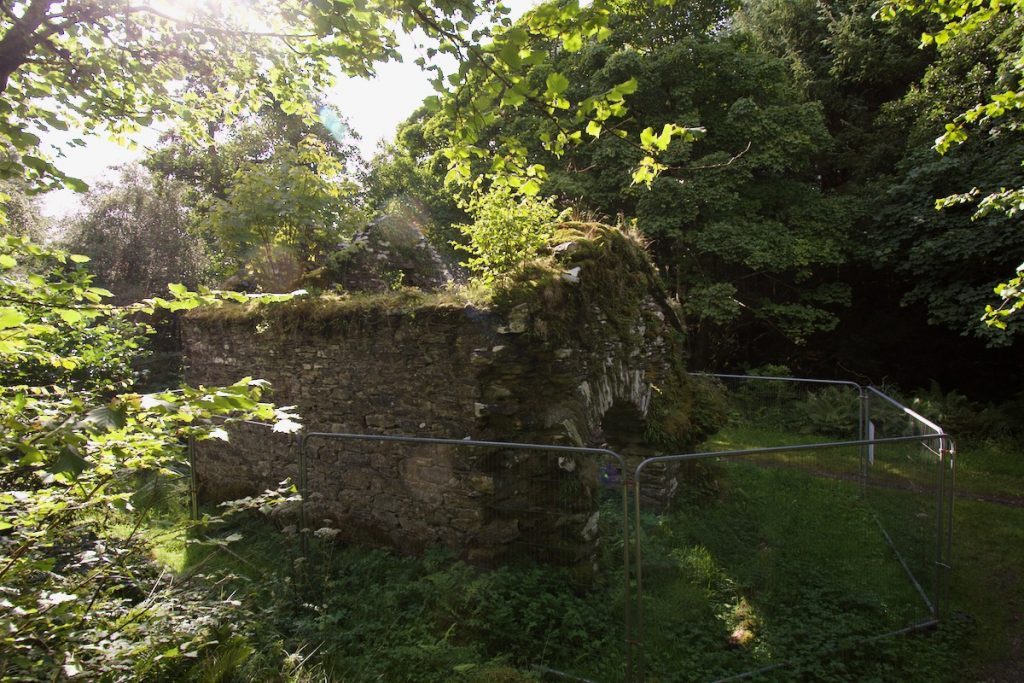 The exact date of its construction is not known. In 1542, however, a charter by Archibald Campbell to Neil MacNeil of Taynish includes a “grain miln newly built by the granter on the lands of Ob and Kilmore and the mill land called the Two Gartane Mollyn, with pasturage for 2 cows and 1 horse yearly on the lands of Kilmory of Gillebir.” (Kilmartin Museum survey, 2014)
The exact date of its construction is not known. In 1542, however, a charter by Archibald Campbell to Neil MacNeil of Taynish includes a “grain miln newly built by the granter on the lands of Ob and Kilmore and the mill land called the Two Gartane Mollyn, with pasturage for 2 cows and 1 horse yearly on the lands of Kilmory of Gillebir.” (Kilmartin Museum survey, 2014)
The mill and its enclosures (the ‘Two Gartane‘) remained with the MacNeils of Taynish until 1837. It seems that the MacNeils sub-let the mill to tenants including Gillecallum McDowill in 1582; Malcolm McGillergin in 1669; and Archibald McKisage (McKessock) in 1747. The last miller was Neil MacCallum, named in the census of 1851.
“…the rights to run the mill included land and grazing for livestock on the estate land.”
(Forestry Commission Scotland)
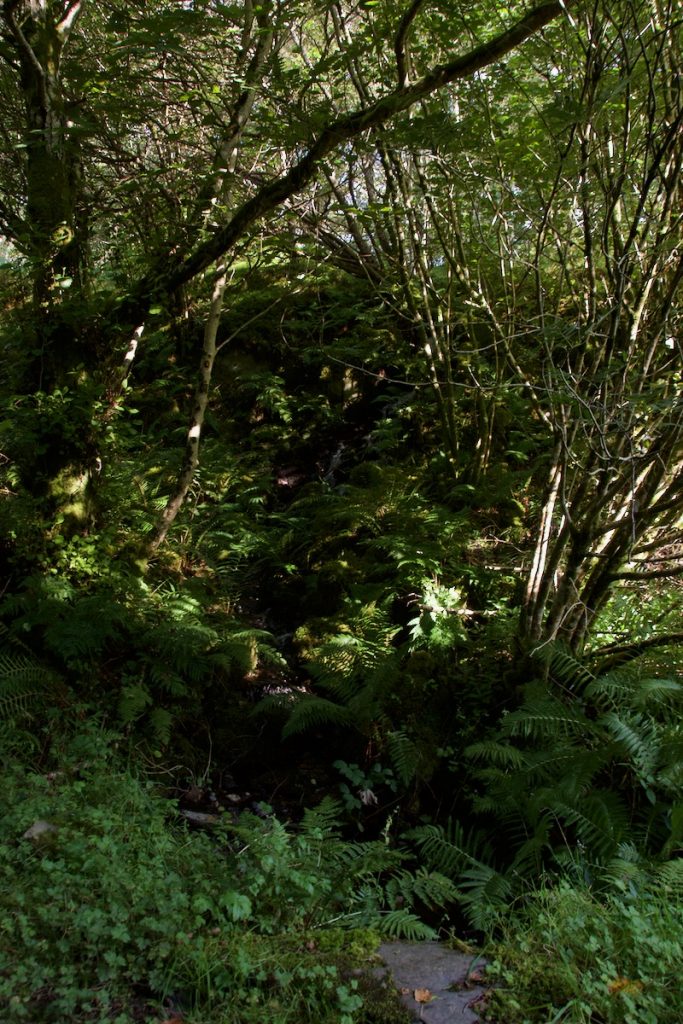
The mill lade
The mill wheel would have been powered by a lade that still tumbles down directly from Loch Coille Bharr. The building actually stands below the level of the water, and so it has the entire loch as its mill pond – it would certainly never run short of power! Maybe this is one reason why it is quoted as one of the ‘three boasts of Knapdale’ in the intriguing verse above.
A survey by Kilmory Museum reveals that the earliest phase of building lies at the northern end, where a wide arched doorway still survives. This is considered to be the entrance to a loading bay, and the original building would have extended further north, closer to the source of water. Sometime later, a drying room was added at the south end.
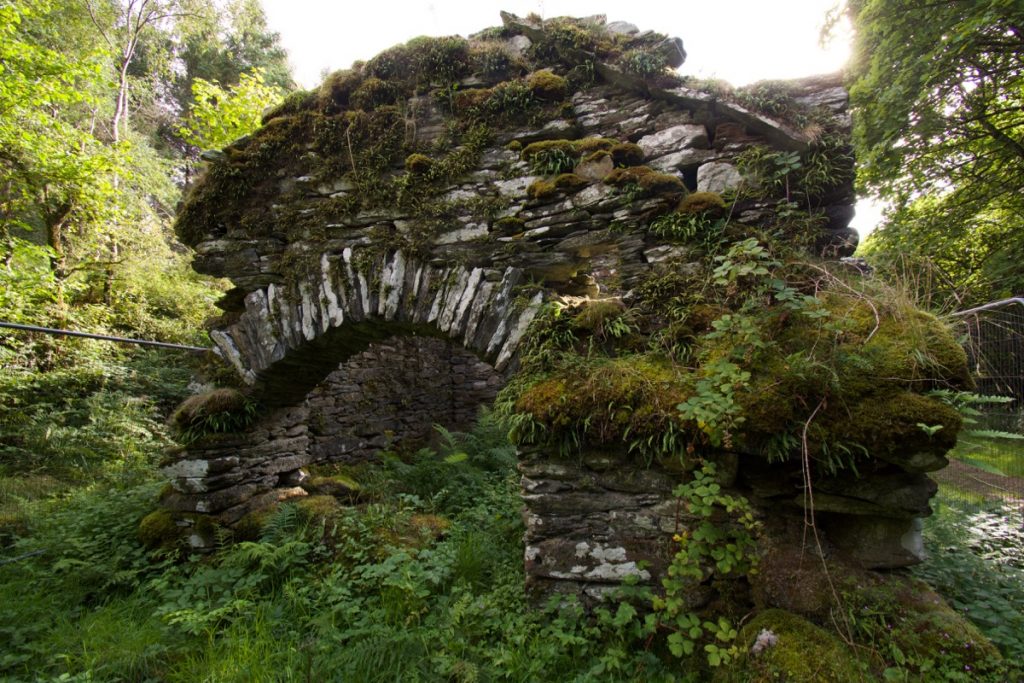
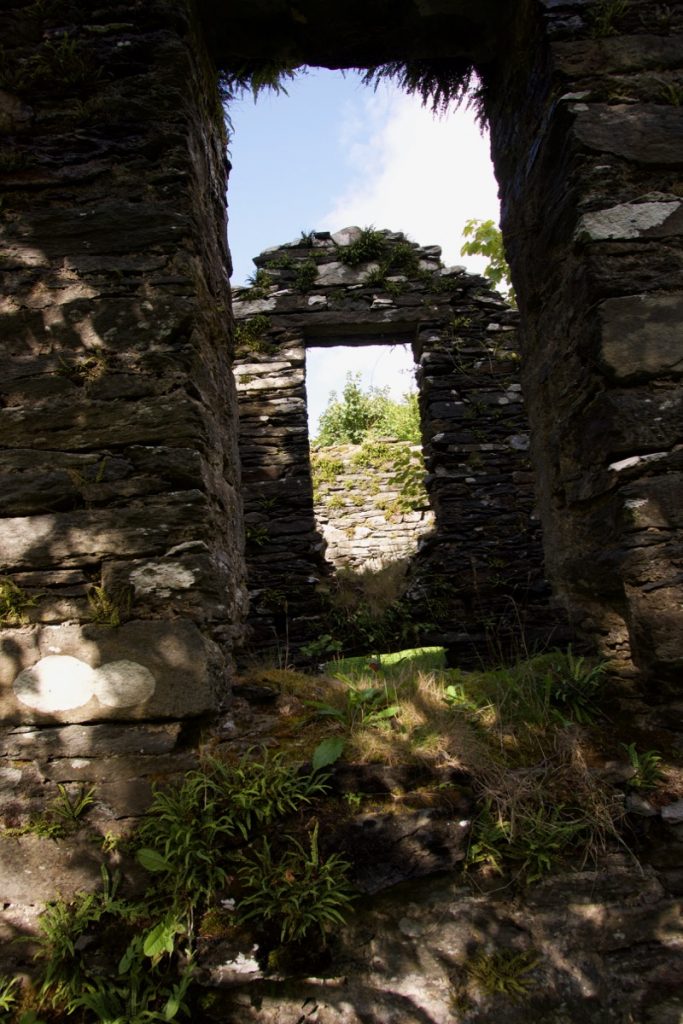
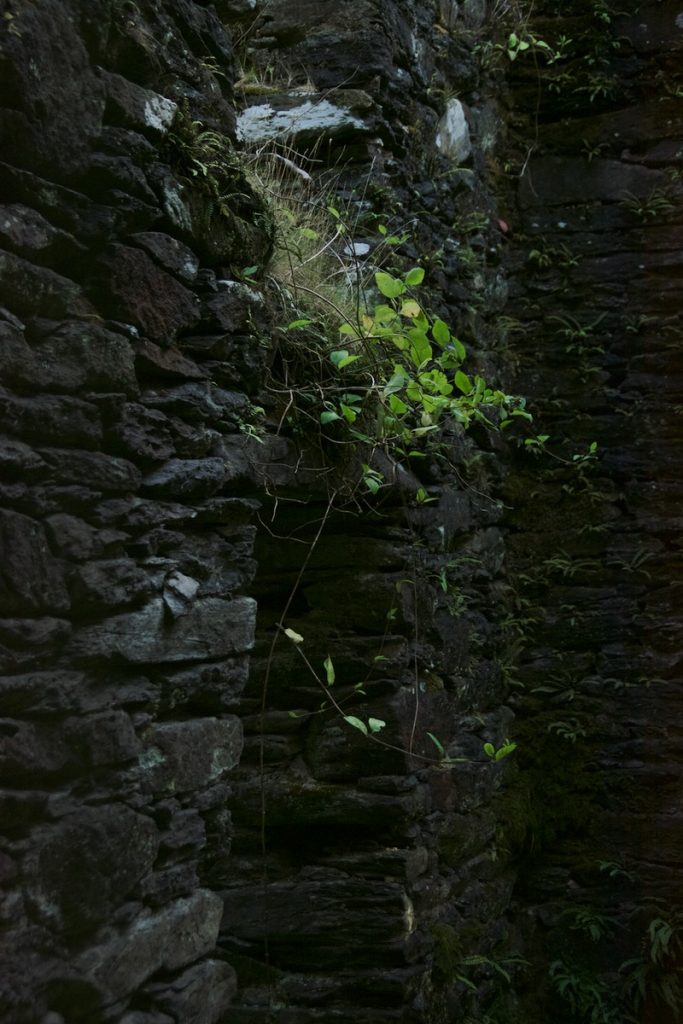
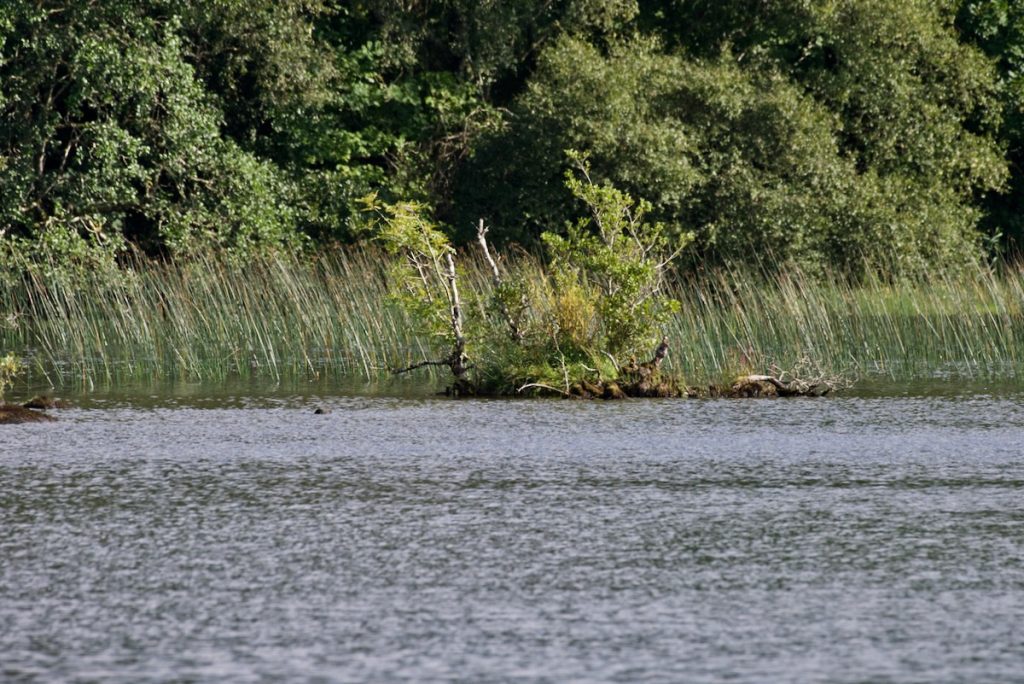
Loch Coille Bharr
The first edition Ordnance Survey map (1873-1880) also shows three roofed buildings – possibly dwelling houses – on the other side of the track, but we saw no trace of these. It is thought that most of the stones may have been plundered, and the remaining foundations are now very much overgrown.
According to a traditional story, Kilmory Mill was an unlikely refuge for a clan chief’s wife who was fleeing from her murderous husband. I remember telling some of the story when I wrote about the Macleans of Duart Castle…
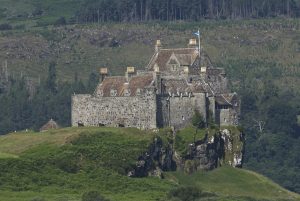
The 11th chief of the Duart Macleans, Lachlan Cattanach (c.1465-1523) took a vicious dislike to his first wife, Catherine, reputedly because she had failed to give birth to an heir. One story says that Catherine tried to poison her husband. Lachlan took her to a small tidal island, now known as Lady’s Rock, in the Sound of Mull, and left her to drown. Next morning, he reported her death to her brother, the Earl of Argyll.
Catherine didn’t die, however. She was rescued by a passing fishing boat, and taken back to Kilmory Mill for shelter. When she had recovered from her ordeal, she fled to Inveraray to be with her brother, and it was there, at a banquet, that Lachlan was surprised to discover her, a few days later. Soon afterwards, Lachlan was murdered in Edinburgh.
According to the story, the Earl of Argyll granted the mill to his sister’s rescuers, out of gratitude. (There is another version of the tale, however, that claims Catherine was saved by her husband’s servants who disobeyed orders.)
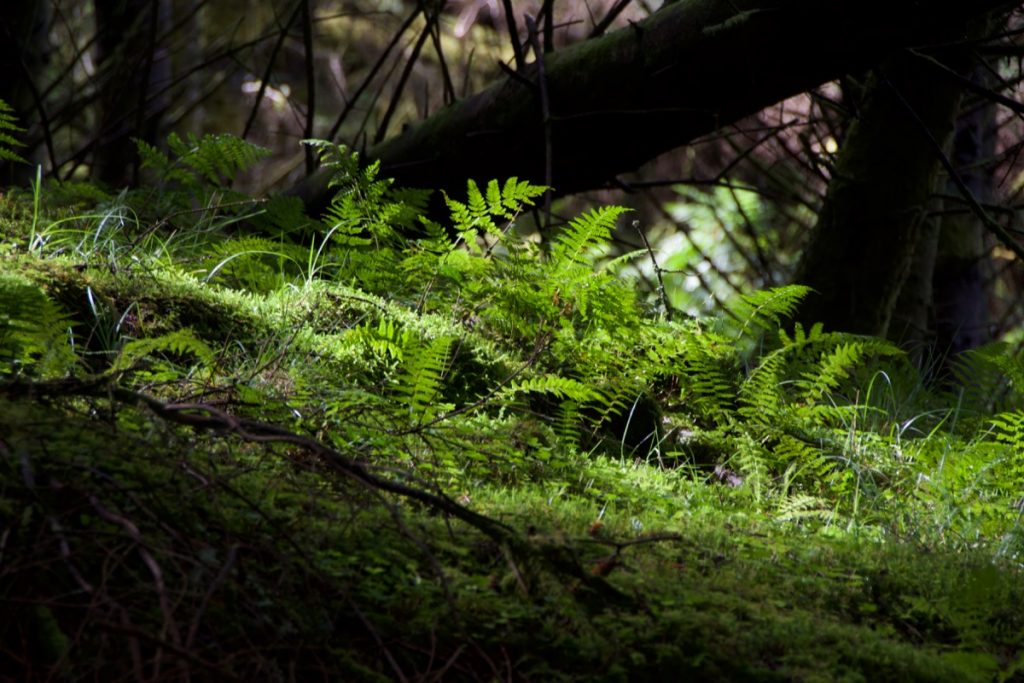
The atmosphere around Kilmory Mill is one of absolute peace, with the constant gushing of the lade and the whispering of trees overhead. The old road that leads past it follows the shore of Loch Coille Bharr and ends up on a spur of land in Loch Sween; we were surprised at the surface of this road, which certainly looks well made, with stones carefully laid and a gentle ‘crown’ or dome in the centre – this is an old cart path, for sure, probably one of the roads for which the tenants of Kilmory Oib paid taxes in the 1800s.
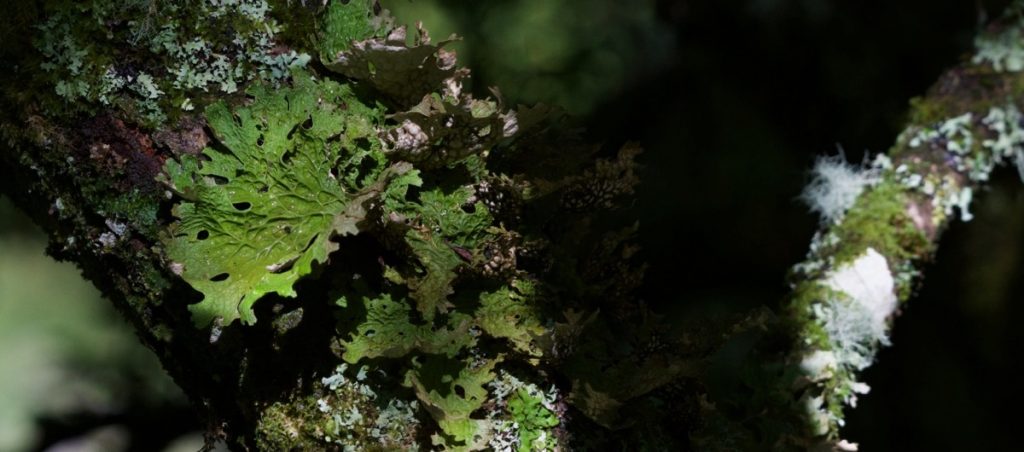
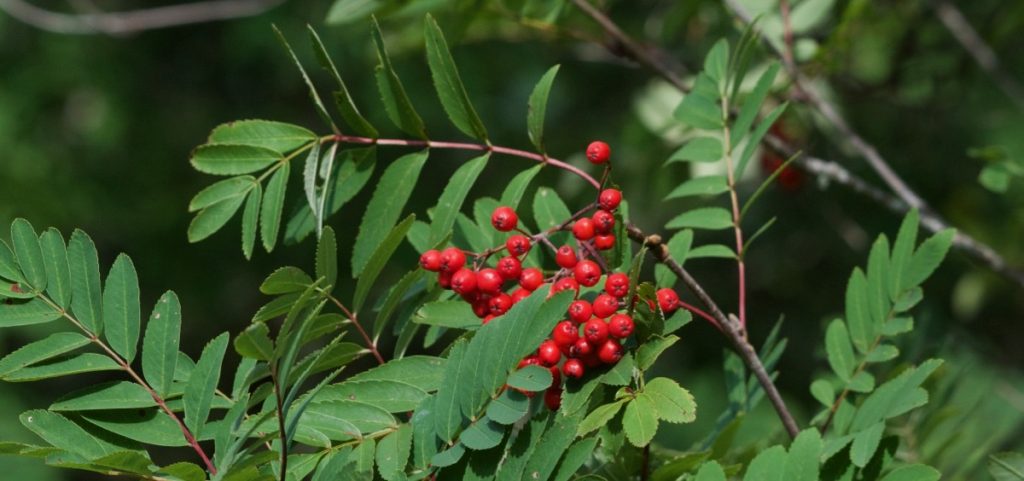
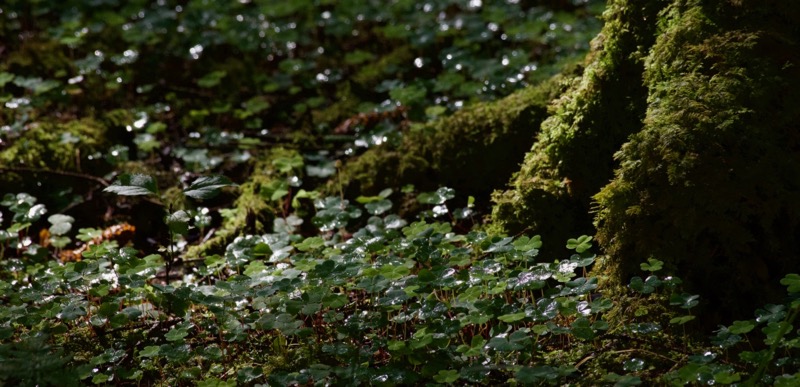
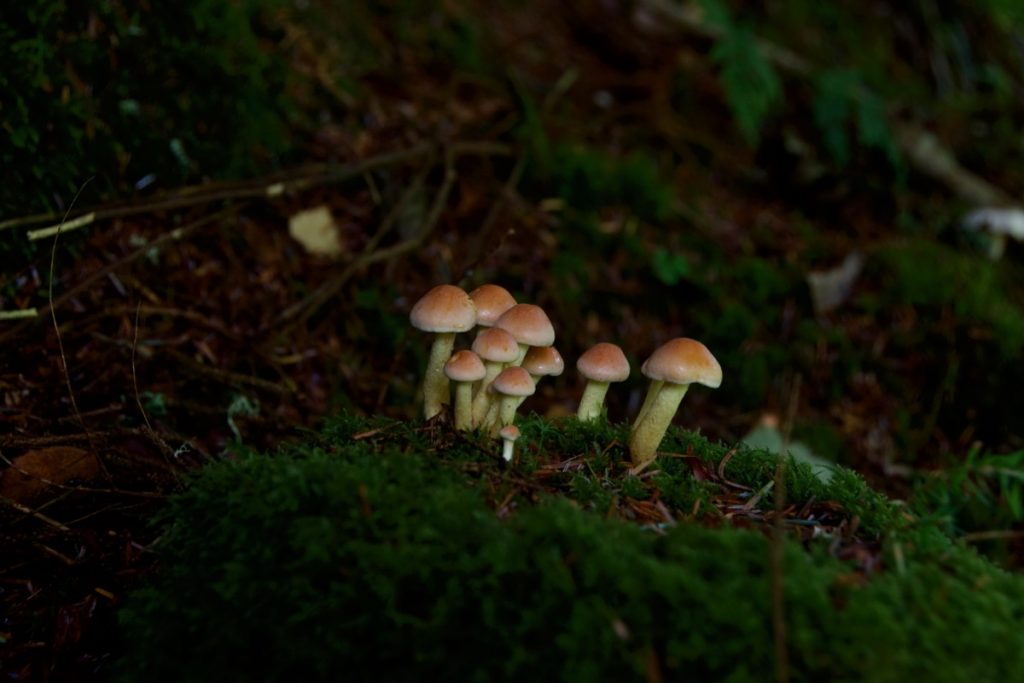
On shady platforms under the trees, little crops of golden toadstools had pushed their heads through the moss. Summer was on the wane, but the breeze was still warm and butterflies flickered in the shafts of sunlight. The last miller of Kilmory would probably have left in the mid-1800s, along with his family, in the more general, sweeping clearance of the Highland glens. It’s hard to believe that his heart didn’t ache for the ‘dark mill of Coilebar’.
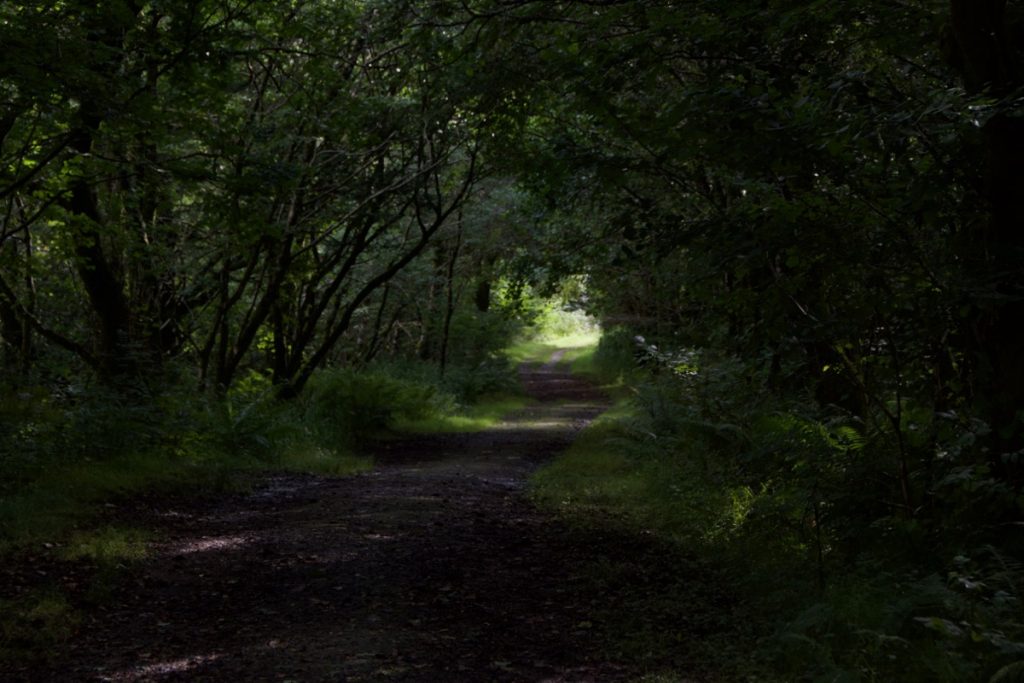
*If anyone can tell me what a fish cruive is, I’d be interested to know! I’m thinking it might be some kind of static fish trap.
Further reading & reference:
- Kilmartin Museum survey of Arichonan, Kilmory Oib and Kilmory Mill
- Canmore database
- Forestry Commission Scotland – Loch Coille Bharr Mill
- Forestry Commission Scotland – Lady Maclean’s story
- Duart Castle
Images © Colin & Jo Woolf

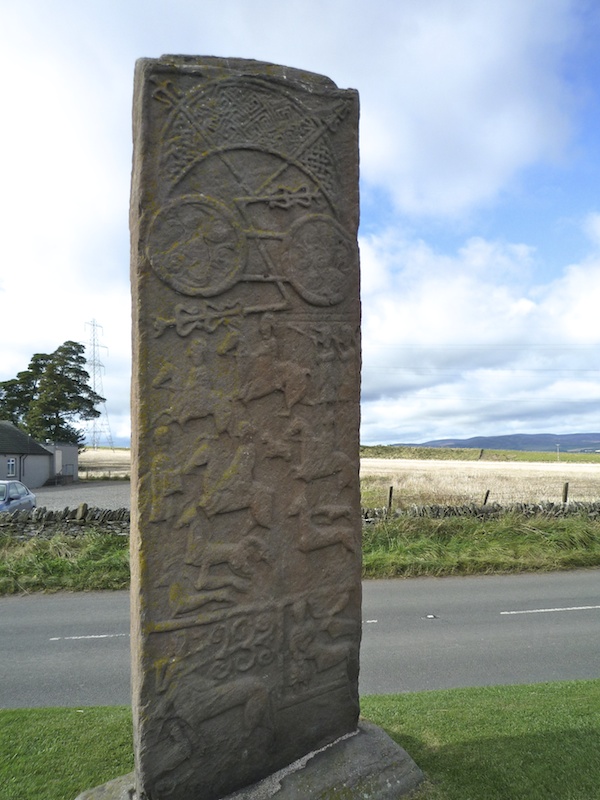
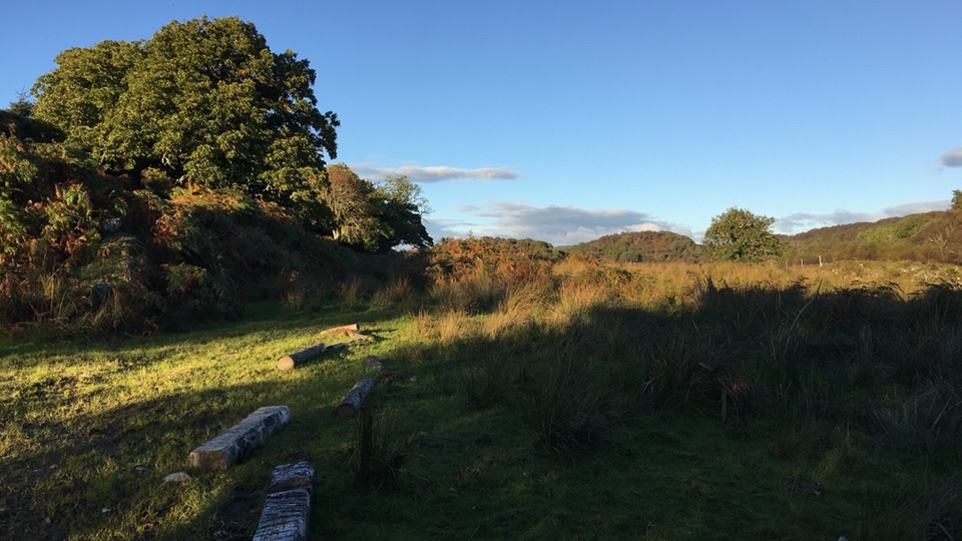
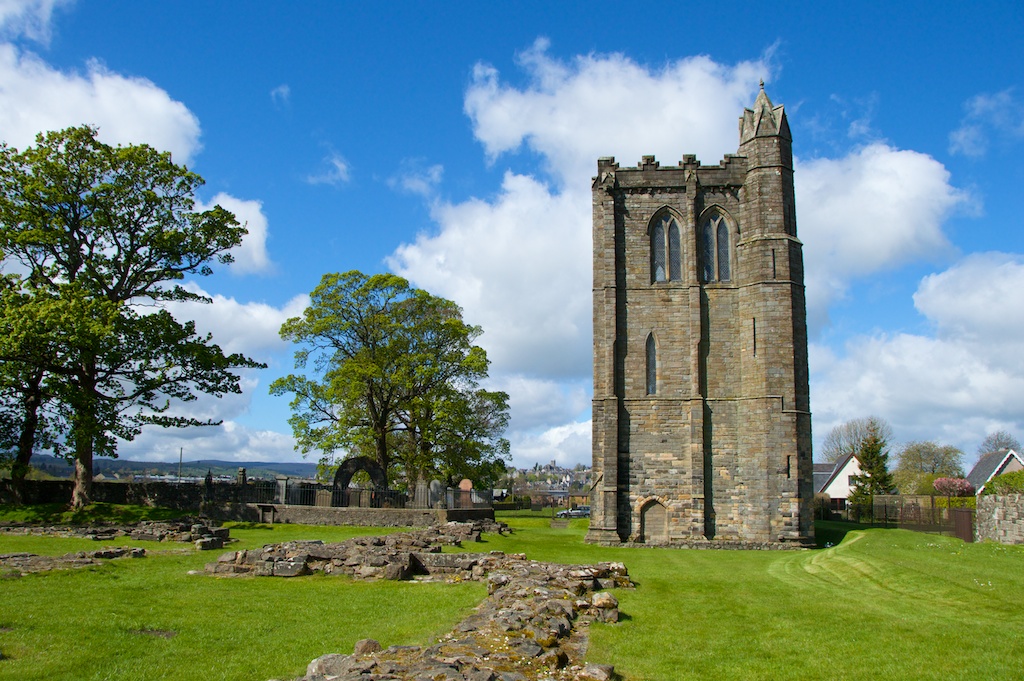
10 Comments
dinahmow
Cruive is an old Scots(dialect or local slang) word for a hovel or crude pen for stock. So, possibly, the fish cruives may have been a net in the mill race?
Jo Woolf
Very interesting – thank you again – so yes, there could have been a net, perhaps across a narrow opening, and the harbour at Crinan seems ideal. Wherever they were, they must have been very efficient! Nice to solve the puzzle!
dinahmow
I googled and Collins Dictionary says “fish trap” is one of 3 meanings
Jo Woolf
That’s wonderful! Thank you very much, Diane. I couldn’t find any reference to it myself.
Lorna
It must have been a sad occasion when the last miller left the mill behind. The buildings were so beautifully constructed, it would be fascinating to flit back in time and see them intact and in use. Your photographs are wonderfully atmospheric, Jo, and I love all the ferns and mosses. It’s inspiring, the way in which nature takes over when man has gone.
Jo Woolf
Thank you, Lorna! Yes, I would so love to be able to go back in time and see the mill working. I can only imagine how sad it was to leave it. We really enjoyed looking at all the lovely plants and fungi that are coming up in the forest. That’s very true, I love the way nature softens all the edges once humans have left.
Nancy Roberts
Are the pictures of The dark mill of Coilebar yours or did you get them from somewhere else? And if yours do I have your permission to post them to my family Tree online? I love them ty
Jo Woolf
Hi Nancy! The pics are mine and you’re welcome to post them to your family tree – a credit to Jo Woolf or The Hazel Tree would be appreciated. Glad you like them, and thanks for asking. Do you have ancestral connections there? With best wishes, Jo
Nancy Roberts
Hi Jo, Thanks so much for the permission to post your pics. I will be sure to credit you as the owner of them. And I don’t have a connection to the McNeill family who held the Charters for the mill from 1542 onward, but my husband does, so then do our children. Our family connection is Neill McNeill who came over to North Carolina, U. S. A. in 1739. I have made a tree of the McNeill family of Taynish and many of them passed the mill along family lines. The last one I have is in 1720 when Neill McNeill of Taynish with permission of his son and Heir Hector, at the death of the miller, Malcolm McGillergan, passed the Mill to Capt. Hector McNeill of Ardee, county Louth Ireland (cousin to Donald McNeill of Gallachallie. )
I have another question for you. I am helping a man whose McNeill family was from Ireland. He lives in Australia. He is writing a book on the Arran McNeill’s and wants me to help him do a chapter on the Taynish McNeills. Can I use the pictures in that chapter? Will be sure to give you credit. If you would rather not it is ok. Will just post them to our family tree. Thanks and I love your site. Beautiful pictures.
Nancy
Jo Woolf
Fascinating to hear about your husband’s connection with the McNeills of Taynish! And to hear that the mill passed to a McNeill in Ireland in 1720. We pass Gallachoille every time we go down towards Tayvallich, a cottage (presumably former farmstead) overlooking Caol Scotnish, a spur of Loch Sween. I’d be delighted to let you use some pics for your chapter in the book on the Taynish McNeills – again, a credit would be appreciated. For printing purposes, you might need them at higher resolution – if so, let me know which ones you’d like and I’ll email them to you. If you’d prefer to email me, my address is: jo@thehazeltree.co.uk With best wishes, Jo
PS you may already have come across this site, but just in case! http://www.knapdalepeople.com/clanmcneillintro.html It lists some more links and papers in the ‘Sources’ section.